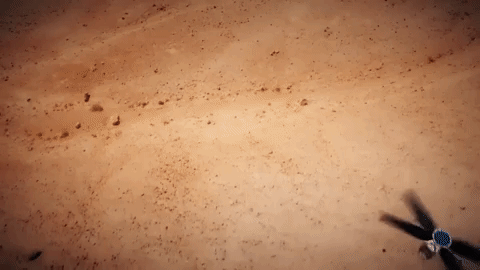This week, there are highs and lows in the field of science and tech ... we're optimistic as we look forward to studying Mars and combating cybersecurity threats, though we're fearful for the future of the ozone layer. Here's our take on what's new in science:
A helicopter on Mars
NASA recently announced that a small helicopter will accompany the Mars rover it plans to launch in 2020. This is interesting news for a few reasons. Perhaps foremost, the helicopter looks hilarious:

It looks a lot like a device you would see on the original Star Trek, or 2001: A Space Odyssey. Or perhaps like a small anthropomorphic bug.
Another interesting factoid about this helicopter is that, because Mars’ atmosphere is 1 percent as thick as Earth’s, its rotors will turn at around 3,000 revolutions per minute – about 10 times the speed of a terrestrial helicopter’s.
Finally, Mars can be anywhere from three to seven light-minutes from Earth, depending on the planets’ various orbital positions. This means that the helicopter won’t be able to be controlled by a human pilot (since information from Earth can reach Mars in no less than three minutes) – it’ll have to operate quasi-autonomously. So perhaps in 2020, Earth won’t be the only planet having to worry about being taken over by autonomous robots.
-Jasper Gilley
Threats to cybersecurity
Another day, another security vulnerability.
This time, vulnerabilities have been discovered in common email encryption types including Apple Mail and the iOS mail app. Through these vulnerabilities, malware can be added into emails, which infects others’ emails and compromises their security.
The discovery of holes in cybersecurity is nothing new, nor is the premise of savvy coders exploiting these holes for malevolent purposes. When new gaps are found, software is updated to patch or mitigate the potential damage of the threat. This can take time, but software, like all technology, is not perfect, and it is a constant battle between coders and those who seek to exploit code. Nonetheless, one solution to the general problem of hacking is the mainstream introduction of quantum computing, where information is not represented by binary 0s and 1s, but through values that can be defined by any number between 0 and 1. In effect, computing is not as clear-cut as on-off, yes-no.
This technology is not necessarily new in terms of its conception; Nobel-prize winning physicist Richard Feynman hypothesized a computer that takes advantage of quantum mechanics in 1982. Despite the advancements in quantum computation that have occurred in the 35 years since Feynman, “classical” computers still reign supreme in the fact that they are the mainstream technology. In addition, the computational power of quantum computers can be matched by classical computers, such as when IBM simulated a 49 qubit system using normal computers.
With all of this uncertainty regarding the efficacy of quantum computing as a revolutionary new computational technology, there might be a glimmer of light at the end of the quantum tunnel. Google recently unveiled its new quantum computing chip, Bristlestone, which has 72 qubits and could allow for 2^72 different states. This is a sextillion calculations possible at once, which is at the computing power of supercomputers. Good luck breaking through security with that type of computing power.
-Ryan Wagner
CFC levels rising
As if environmentalists needed another thing to worry about, a recent study suggests that chlorofluorocarbon (CFC) levels are increasing. CFCs are ozone-depleting greenhouse gases that can stay in the atmosphere for about 50 years. The suspicious thing is, though the CFC levels are rising, these substances are banned.
To help fix a hole in the ozone layer, countries decided to ban the production of CFCs in 1987. After that, it seemed that things would get better – emission levels of CFCs fell and the ozone hole started to close. But now, researchers have found that new CFC emissions are coming from the area around China, Mongolia and the Koreas. The actual source is, however, unknown.
As a result of this increase, we could be facing dangerous long-term damage to the ozone layer. However, the study’s lead author Stephen Montzka hopes that the damage will be minor if the situation is addressed soon.
-Carlyn Kranking